Rodents are considered pests in most areas of the world, but some can be pretty cute. In this article, you will find 10 of the cutest rodents in the world and interesting things to learn about each one. With around 2000 different rodent species worldwide, not all of them are as unsightly as the naked mole-rat. Some can make great pets and even be as cute as a puppy. Here are the 10 cutest rodents in the world.
1. Wood mouse

Wood mice have long tails, rounded ears, and small furry bodies.
©Rudmer Zwerver/Shutterstock.com
Wood mice are a cute species living in forests, fields, and grasslands of Europe and southwestern Africa. They venture out at night and live in vegetated burrows during the day. Wood mice have long tails, rounded ears, and small furry bodies. They only weigh around 0.83 oz, slightly larger than a house mouse. Their small size makes them cute but also vulnerable to predators like foxes, hawks, owls, cats, snakes, and other woodland hunters. Like a lizard, they have adapted the ability to lose their tail to increase their chances of survival.
Being cute does not mean they are harmless, as wood mice are carriers of many diseases. Most of their lives are spent avoiding predators and harvesting food. Wood Mice may become more active near humans since we scare off predators trying to eat them. Unlike other rodents, wood mice do not make good pets because of their wild nature and need to be cared for from biteth to become domesticated.
2. Prairie Dogs

Prairie dogs kiss to ensure they are part of the same family.
©Nick Fox/Shutterstock.com
Prairie dogs are small and fluffy, similar to stuffed teddy bears. Living underground in burrows, they inhabit the great plains and grassland habitat. Prairie dogs are social rodents and can live together in families as big as 12 prairie dogs. Always watching out for predators, they have different alarm calls to warn when one is close. The prairie dog’s call is essential in keeping the family safe and letting others know what kind is near. Sometimes these sounds are similar to a dog’s bark, which is why ‘dog’ is in their name.
Prairie dogs only grow between 14 to 17 inches (35 to 43) tall and weigh around 1 to 3 lbs. They are great for their habitats, fertilizing and aerating the soil they burrow in. They are one of the cutest in the prairies and are even seen “kissing” or touching teeth with each other to recognize each other.
3. African Pygmy Squirrel

Like a beaver, the African pygmy squirrel continuously grows their teeth throughout its life.
©sirtravelalot/Shutterstock.com
The African pygmy squirrel is the smallest squirrel in the world, only reaching a maximum size of 5.5 inches. They are also extremely light, weighing between 0.63 to 0.53 oz (15 to 18g), less than the small house mouse. African pygmy lives in forests in central Africa. Being so small, they must scavenge the forest floor, all while they are awake. They use the trees they live in for food, eating bark and insects on the trees.
African pygmy squirrels are as small as a mouse, with tiny bushy tails and big eyes. Like prairie dogs, they make a popping noise when a predator is near. Predators like hawks, snakes, and army ants are some of their predators. Because of their look, some keep this species as a pet and are kept in pairs to be more comfortable. They are shy and jumpy around people because of their small size.
4. Pygmy Jerboa
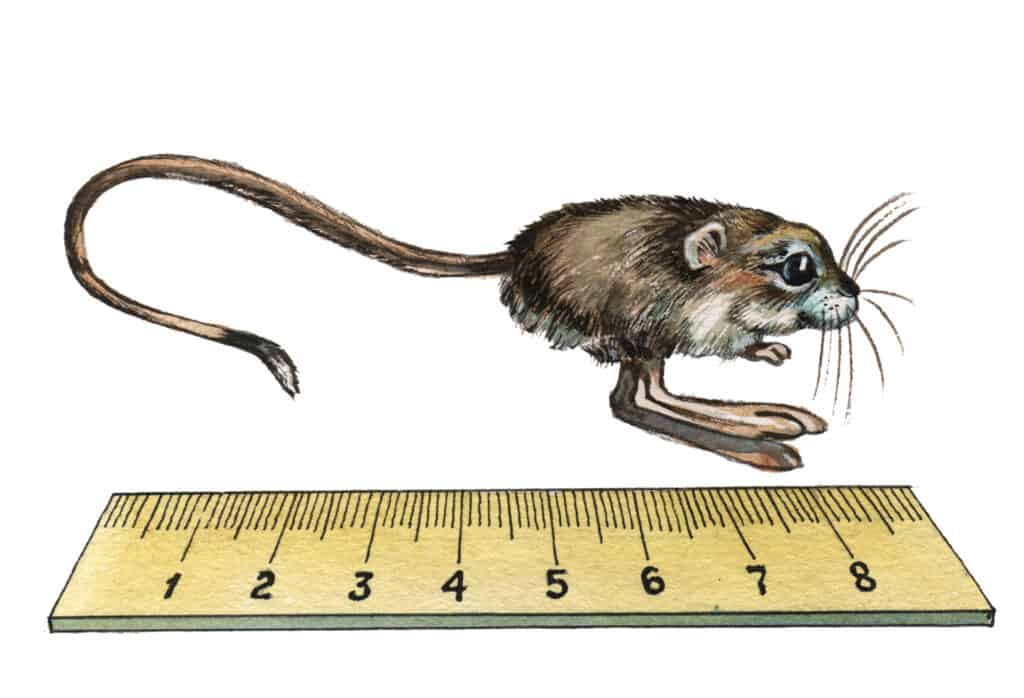
The average size of a Pygmy Jerboa is 1.7 inches (4.4 cm), and its tail is almost double its length.
©Sergey Mikhaylov/Shutterstock.com
Pygmy Jerboas are the smallest rodent in the world, which is why they are also one of the cutest. 1.7 inches (4.4 cm) is the average size of a Pygmy Jerboa, and its tail is almost double its length. They are also extremely light and weigh around 0.132 oz (3.75 g). The pygmy jerboa is so small that it could fit into your palm, causing them to look like miniature bunny-like kangaroos
Keeping a jerboa in captivity is not common since they do not fare well when out of the wild. Deserts, oases, and valleys in Egypt and Libya are the areas they inhabit. Plants, seeds, roots, and leaves are what they eat, and since they are small, they get enough water from the food they eat, so they don’t need to drink often.
5. Chipmunks
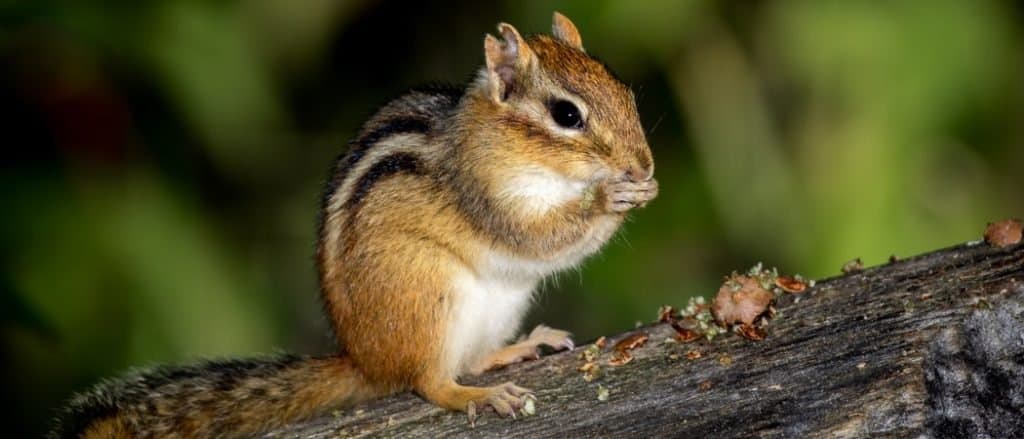
Chipmunks have many similarities to squirrels, like taking shelter in shelters and feeding on piles of stashed food.
©RT Images/Shutterstock.com
Chipmunks are seen as pests for tearing up yards and making loud noises, but that doesn’t take away from their cuteness. They have a large range stretching from Canada to Mexico, living in various environments. Chipmunks are closely related to squirrels and are known for stuffing their chubby cheeks with as much food as possible. Fruits, insects, eggs, and grain are some foods they eat. They hold their food, making traveling and carrying large loads easier.
The burrows are tidy and hidden from native predators like cats, foxes, weasels, and snakes. In movies and media, chipmunks are popular because of their cuteness. Chipmunks have many similarities to squirrels, like taking shelter in shelters and feeding on the pile of stashed food that was gathered previously. Chipmunks live below in burrows, while most squirrels make nests in trees.
6. Chinchilla
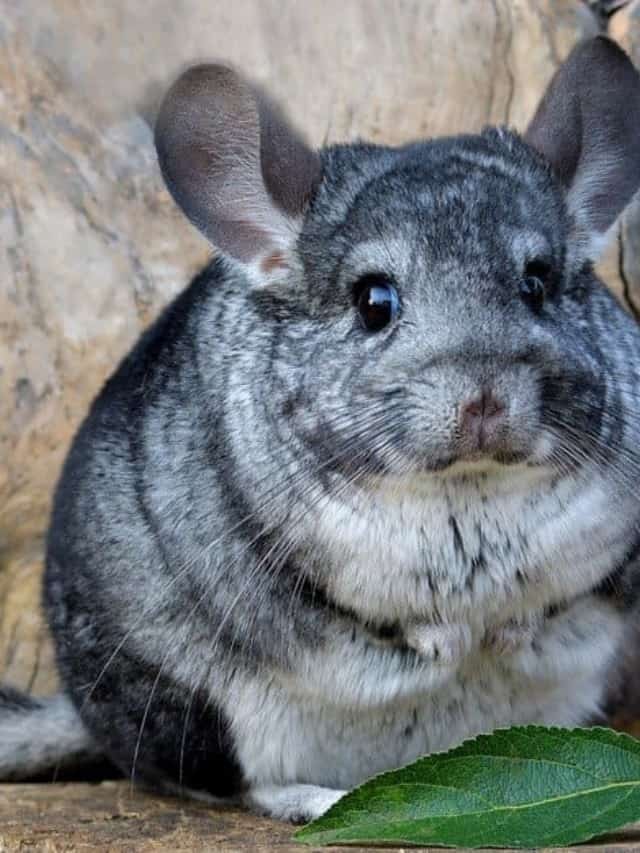
In the wild, chinchillas live for around 10 years but can live 12, 15, and even 20 years in captivity.
©AttilaBarsan/Shutterstock.com
Chinchillas are popular pet rodents because of their rabbit-like look and small rat size. They are native to western South America, living in rocky mountain habitats. Chinchillas weigh between 1.1 to 1.8 lbs (0.5 to 0.8 kg), are gray, covered in fur, and have bunny-like ears. They are one of the cutest rodents and are also fulfilling pets.
In the wild, chinchillas live for around 10 years but can live 12, 15, and even 20 years in captivity. They are not pets for everyone, but they can live fulfilling lives with dedicated care. Chinchillas live longer than most other pet rodents and have a cute furball appearance.
7. Guinea Pig

Guinea pigs live from 4 to 8 years and can make great pets.
©Rita_Kochmarjova/Shutterstock.com
There are around 13 guinea pig species, each with a unique look. Some have long hair, while others have fluffy or poofy hair. Brown, white, and orange are some common colors they come in, giving them various cute looks. In South American forests, mountainous grasslands, and savannas, guinea pigs roam the land. Guinea pigs live from 4 to 8 years and can make great pets.
Romaine lettuce, peas, kale, tomatoes, and can live in cages in captivity. Guinea pigs are social creatures and live together in groups of 10 or more in the wild, and they also fare well in larger enclosures and with other guinea pigs. Even for children, guinea pigs are good pets and are among the cutest rodents.
8. Common Dormouse
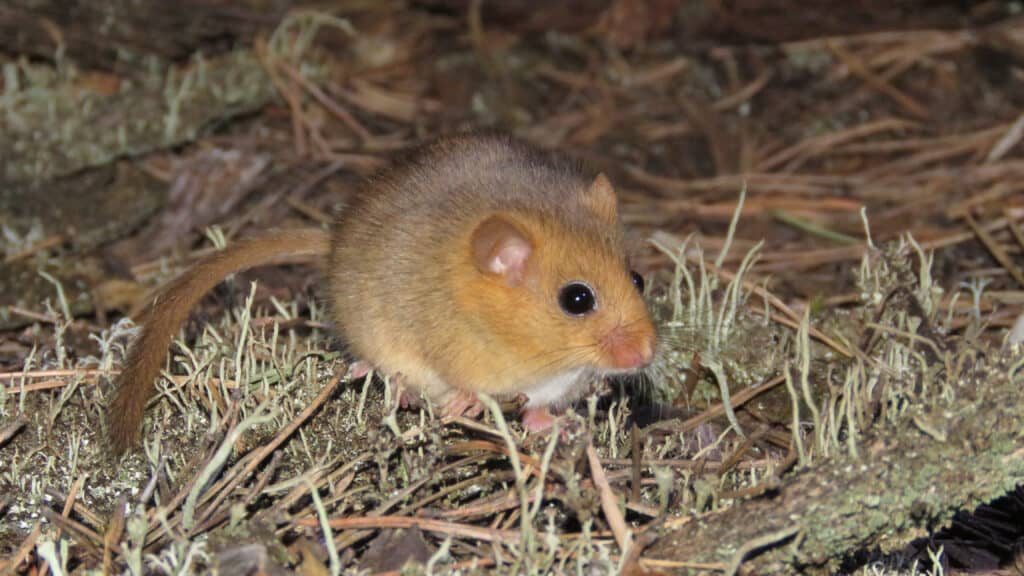
The common dormouse face threats like the destruction of their habitat, lack of food, warming of the climate, and natural death.
©Oleksiy Sapuha/Shutterstock.com
A sleepy mouse, the dormouse, can spend up to half the year hibernating. They live in Europe and parts of Asia, inhabiting deciduous woodlands. Most of their time is spent in the trees, and they will rarely come down. Winter is when they hibernate, and summer is when they regularly sleep. Before hibernating, they eat nuts, fruits, and berries to put on fat.
Common Dormouse colors are hazel brown, and they have fluffy fur. They grow to a size of 3.9 inches (10 cm) and weigh between .6 to .7 ounces (17 to 20 grams). Predators will prey on this small, vulnerable species. They are a threatened species that face threats like the destruction of their habitat, lack of food, warming of the climate, and natural death. In the wild, their life last 5 years, but in captivity, they have an average lifespan of around 12 years.
9. Hamster
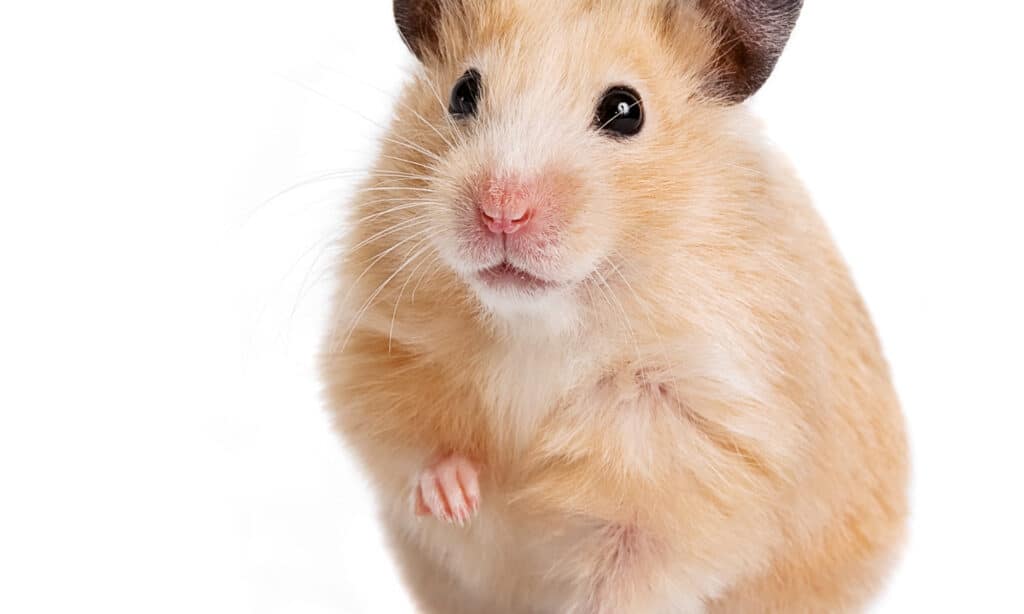
Hamsters are usually solitary to humans but can form good companionship if given proper care and regular attention.
©Elya Vatel/Shutterstock.com
Hamsters are one of the most popular rodent pets and attract people because of their cuteness. Originally, hamsters lived in Syria, China, Romania, and Belgium but have found their way into pet stores across the globe. Dry, warm climates near the edges of desserts are where hamsters live in the wild.
In the wild, hamsters eat grains, seeds, and fruit, but captivated hamsters can eat various fresh and dry foods. Hamsters are popular pets because of their cuteness and low price. Hamsters are easy to care for, needing only a good home, exercise, and nutritious food. Hamsters are usually solitary to humans but can form good companionship if given proper care and regular attention.
10. Japanese Dwarf Flying Squirrel
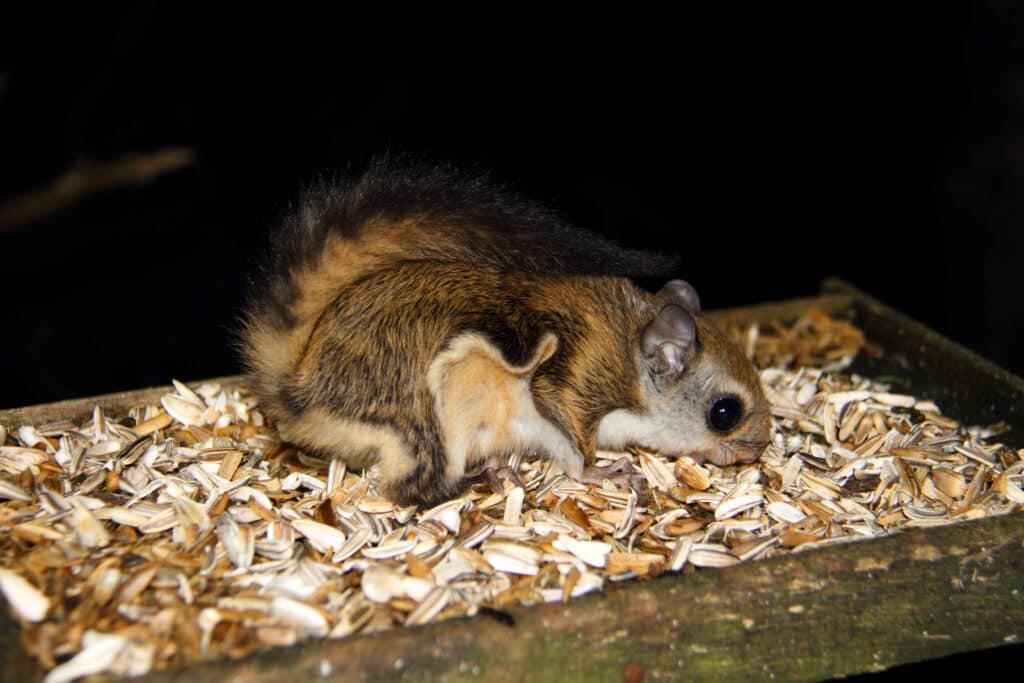
A membrane called patagium helps Japanese Dwarf Flying Squirrels glide in the air.
©feathercollector/Shutterstock.com
Native to Japan, the Japanese dwarf flying squirrel is one of the cutest animals on the planet. As their name suggests, they are extremely tiny, only weighing 0.3 lbs (150 grams) and growing to 5.5 to 7.8 inches ( 14 to 20 cm). This species is one of the smallest flying squirrels in the world. They have fluffy fur and big round eyes, making them one of the cutest.
The evergreen forest is the preferred habitat of this species, living in areas plentiful in trees. Japanese dwarf flying squirrels are nocturnal and take shelter in tree holes, and they are active year-round and move from tree to tree to find food or escape predators.
The photo featured at the top of this post is © iStock.com/Olga Skred
Thank you for reading! Have some feedback for us? Contact the AZ Animals editorial team.






